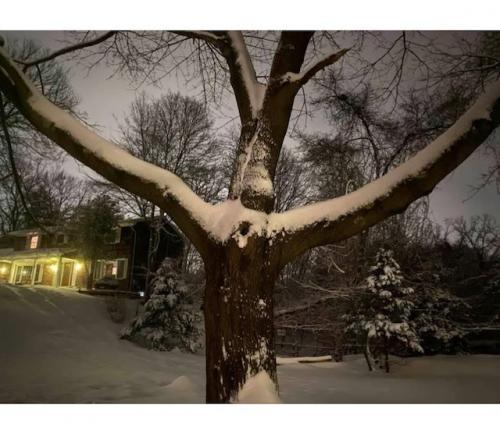
Many of you who know me know I love trees – and deer! I love pictures of different kinds of trees, stories of trees, even real live trees that I like to hug! In my earlier years I would say, “hug a mug and save a tree”.
In Jesus’ time, most of the parables had to do with agriculture, as it was one of the ways people made a living. People knew what the examples meant, or maybe not. One needs to take to heart the parables and see where it leads you. Such is the case of the story of the barren fig tree. Who are the characters in the story, what are the messages, how does this relate to you?
In my reflection and sharing with friends, I couldn’t help but think of my story of being the tallest tree in the forest. I am sure I have shared this with you before, but as a reminder I will share again. How do you become the tallest tree in the forest? There are two ways. One is to sink your roots deep into the earth and grow sturdy amongst the other trees, which at times protect it and help it to grow. Another way is to chop down all the other trees. The second way is very stark, wouldn’t you say? The first speaks for itself.

During my Lenten reflections, when I came upon a quote from Edward Hays’ book A Lenten Hobo Honeymoon, I was excited because I thought it rounded out my previous story. Hays speaks of having a rendezvous with God. He also shared that the word rendezvous literally means “present yourself”. During Lent, we try to cultivate our soil of spirituality by prayer, being present to God. Hays writes: “While life is usually crowded with concerns and worries, don’t plant your tree of love in a forest if Anxiety Elms or Deadline Project Poplars. Don’t root the tree of your prayer amidst the dense thicket of troubles and problems. Instead, take your Lenten Lover’s Prayer Tree and plant it in the wide-open prairie of the closest – even if it is the smallest – empty space. After planting your tree, sit under its welcoming branches, for there you may have a rendezvous with your Lover.”
Are you ready to do some planting this week and find a good space to plant your Lenten Lover’s Prayer Tree?
Where and how do I pray? What do you use to fertilize your Lenten Lover’s Prayer Tree? Among which other trees do I plant it? Lots to think about.
If you need more reflection on trees, Mary Oliver has a prayerful poem When I am Among the Trees, and the last line comparing us to reads “…and you too have come into the world to do this, to go easy, to be filled with light, and to shine”. May your week be fruitful!
Till next week,
Sister Theresita
P.S.: These photos of the trees were taken by our Business Manager at SSPJ, Virginia Portanova. One speaks of a ‘hugging Jesus’; each night, Virginia prays by it, saying “Dear God, thank you for this day and the hug that will hold me through the night”. The image of the three trees reminds her of The Tale of Three Trees by Angela Elwell Hunt. Thanks for the trees, Virginia!